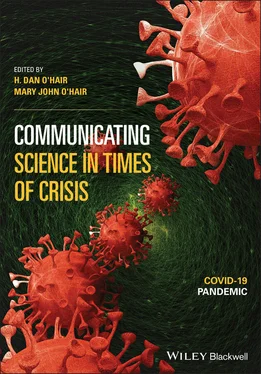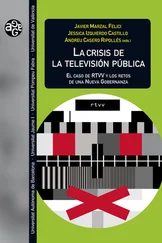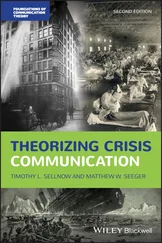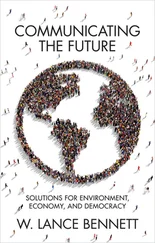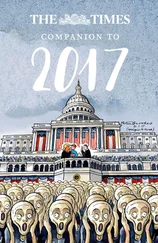One way of thinking about credibility is through consideration of proven and accepted criteria that build messages, and eventually theories, by which the public readily accepts the assumption being advocated. Chaffee and Berger (1987) offered seven attributers that build “good” communication theory. We think the same principles apply in judging good communication science. These characteristics include the following:
Explanatory power: The extent to which the science under consideration explains its purpose and to what extent does the explanation extenuate?
Predictive power: The ability to forecast events or conditions into the future.
Parsimony: The simplicity of the science. Is it easily described and understood?
Falsifiability: The ability to test the science.
Internal consistency: Generally understood as validity. Is the science internally consistent?
Heuristic provocativeness: Is the science interesting enough to spark new ideas and new testing?
Organizing power: The ability of the science to make sense or reduce uncertainty for what is known now.
The application of these principles offers the opportunity to judge the ability of messages about science for their worthiness and value. It is because messages come in different forms and through different media that criteria like those above provide scaffolding for improving how science gets in the hands of those who can use it.
Challenges of Science Communication
Notwithstanding our strong stance on communicating science, we are mindful that this process is fraught with obstacles, derisions, diversions, and mistakes. We will explore some of the more obvious challenges of science communication in this section. Issues such as trust, conspiracy theories, misinformation, public confusion, message, and information integrity loom large as obstacles to scientific communication.
A fundamental understanding in the communication process is that some level of trust is shared among those sending and those receiving messages. Trust is sometimes characterized as competence or reducing uncertainty or increasing predictability that helps to establish the legitimacy of science. But what must be understood is that the legitimacy of science is how that relationship between science and the various stakeholders is managed. One way of looking at trust in science is by examining some arguments about public trust in science. Figure 1.1 provides a simplistic view of how science is viewed as a means of instilling trust in the public about science.

Figure 1.1 Scientists and science.
Mistrust in the message or the communicator raises serious questions about what to believe and what advice to follow. Mistrust can flow directly from campaigns promoting conspiracy theories that undermine legitimate information from the scientific community (Ivanov & Parker, in book). With increasing exposure to false news, publics are put at greater risk because they are confused or become outright converted to a fake news viewpoint.
Information environments and information ecosystems (Childress & Clark, this book) are terms that provide useful scaffolding for understanding the complexity and relationship among information, messages, and media. Information ecosystems become all the more complex through social media where media users have easy and instant access to serve as receivers of information but also producers, directors, critics, and disruptors of scientific messages. Regardless of motive, participants in the information ecosystem have created a turbulent media environment that is not easily navigated when information is so easily transmitted. As Wright (this book) correctly points out, social media acts as a two-headed coin in the COVID-19 pandemic. On one hand, valuable information is circulated from scientific authorities to help prevent infections, contain the spread of the virus, and track the effects of the disease. The other side of the coin is more problematic in the sense that social media can “contribute to the spread of misinformation and conspiracy theories about COVID-19” (Wright). Another author team from this book (Lillie, Pokharel, Bergstrom, & Jensen) continued the narrative by illuminated how such a “saturated and at times contradictory COVID-19 media environment made communication of scientific and health information challenging” sometimes to a point where media users are susceptible to mental illness complications.
One of the goals of this book is to identify the challenges facing science communicators, but also identifying strategies in service of communication effectiveness. One of the ways of doing so is by bringing together a large and disparate body of knowledge and distilling ideas that can separate fact from fiction. Spitzberg (this book) steps up to the task with two chapters that address the serious need for understanding and addressing the misaligned media behaviors that veer from what is known as truth about COVID-19 science. In one chapter, Spitzberg “calls out” the forms of information distortion such as misinformation, disinformation, conspiracy theories, and fake news and follows up by synthesizing extant literature in the area, and then developing a typology that facilitates better understanding of what he terms “dismisinformation.” In another chapter, Spitzberg, Tsou, and Gawron (this book) mined social media messages containing conspiracy-related theories and false information and subsequently conducted geospatial analysis resulting in “a dashboard for near real-time surveillance of social media content related to COVID-19.”
Hard data, the lifeblood of communication science, is indispensable to the monitoring and tracking of viruses like COVID-19, and eventually serves a support function in mitigation strategies (as discussed above). The function of data is a primary focus of a chapter by Nowling and Seeger (this book). According to their perspective,
Data create situational awareness, informs strategic decision, and facilitates public participation in community mitigation strategies. In a more general sense, data addresses one of the most fundamental conditions of the pandemic; high levels of uncertainty about the level of threat and effective responses.
Unfortunately, their own experiences with the virus were troubled by a “lack of resilience and standardization.” Nowling and Seeger reported confusion of data collection owing to the sheer scope of the disease and the inconsistency in which public officials perceived the impact of the pandemic. As it turned out, “The lack of accurate data and interpretations informed by science and public health practice may lead to misunderstanding, a reduced ability to manage the event, failures to comply with recommendations and significantly enhanced harm” (Nowling & Seeger). When fundamental issues, albeit critical ones, are compromised such as data collection and monitoring, the entire system of mitigation has much less chance of success. The next section will continue the discussion of data, information, and surveillance from a slightly different focus.
Pandemics: An Inescapable Truth
Disease outbreaks come and go. Outbreaks of coronavirus alone have appeared three times in the last eighteen years. In 2002, Severe Acute Respiratory Syndrome (SARS-CoV) accounted for 744 deaths across 17 countries. Middle East Respiratory Syndrome (MERS-CoV) was first reported in 2012 causing 860 deaths in 21 countries (McLeod, 2020). Of course, there was the Ebola virus with major illness implications appearing in the outbreak of 2014–2016, although it was first discovered in 1976. Numerous outbreaks of bird flu (H5N2) have occurred in several countries, most recently in 2020, and in 2019, swine flu (H1N1) was identified in several countries. At issue is the fact that disease outbreaks can vary a great deal in how they are transmitted and how humans perceive their risks and how they subsequently react to them. COVID-19 is not a disaster simply because it is a pandemic, its widespread destruction is also due to the world’s lack of preparation and ill-advised responses to it. Moreover, a keystone of a pandemic is that it is more than a “contagion that is determined by the virulence of organism” (Dasgupta & Crunkhorn, 2020, p. 1), it is spread at various rates depending on the social and behavioral tendencies of human hosts.
Читать дальше
